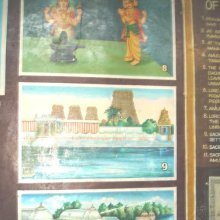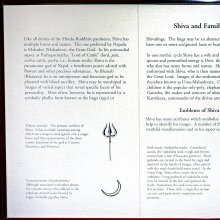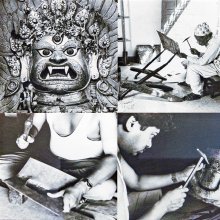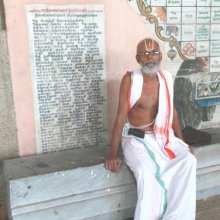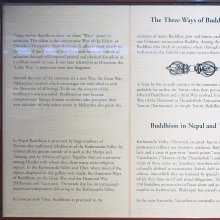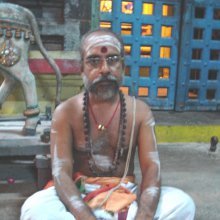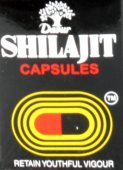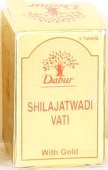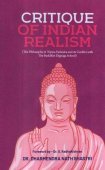Substance: 1 definition
Introduction:
Substance means something in Hinduism, Sanskrit. If you want to know the exact meaning, history, etymology or English translation of this term then check out the descriptions on this page. Add your comment or reference to a book if you want to contribute to this summary article.
Images (photo gallery)
In Hinduism
Ayurveda (science of life)
Source: INSA Digital Repository: Caraka’s Approach to KnowledgeSubstance (Sanskrit: dravya) refers to one of the various Padarthas (categories of all that exists) which were adapted by Caraka in his Charakasamhita.—Vaisheshika was an ancient system dating back to the time of the Buddha and drew within its fold ‘physics, metaphysics, and logical discussions skillfully dovetailed’ (Cf. Charaka Samhita verse 11.44-56).—[...] The primary classification of Padarthas into substance (dravyas), quality, activity, generality, particularity and inherence was adopted by Charaka without changes. But other adoptions from Vaisheshika were qualified.

Āyurveda (आयुर्वेद, ayurveda) is a branch of Indian science dealing with medicine, herbalism, taxology, anatomy, surgery, alchemy and related topics. Traditional practice of Āyurveda in ancient India dates back to at least the first millenium BC. Literature is commonly written in Sanskrit using various poetic metres.
See also (Relevant definitions)
Ends with: Greasy substance.
Full-text (+3665): Dravya, Kshara, Akasha, Rasa, Padartha, Avyakrita, Guna, Ityartha, Paryaya, Mamsa, Vishesha, Parthiva, Nitya, Talva, Dravyatva, Cuva, Shalya, Tattva, Dhatu, Shiladhatu.
Relevant text
Search found 336 books and stories containing Substance; (plurals include: Substances). You can also click to the full overview containing English textual excerpts. Below are direct links for the most relevant articles:
Padarthadharmasamgraha and Nyayakandali (by Ganganatha Jha)
Text 160 < [Chapter 9 - On Samavāya (Inherence)]
Text 20 < [Chapter 3 - Similarities and Dissimilarities among Categories]
Text 8 < [Chapter 2 - Enumeration and Classification of Categories]
Nyaya-Vaisheshika categories (Study) (by Diptimani Goswami)
The Nature of Substance (Dravya) < [Chapter 3 - Dravya (Substance)]
Different Types of Quality (Introduction) < [Chapter 4 - Quality and Action]
Samavāya < [Chapter 6 - Nyāya-Vaiśeṣika theory of Relation]
Tattvartha Sutra (with commentary) (by Vijay K. Jain)
Verse 5.2 - Classification of substances (dravya) < [Chapter 5 - The Non-living Substances]
Verse 5.39 - Classification of time as a substance < [Chapter 5 - The Non-living Substances]
Verse 1.2 - Right faith (samyagdarśana) < [Chapter 1 - Right Faith and Knowledge]
Philosophy of Charaka-samhita (by Asokan. G)
Substance (dravya) [in Charaka philosophy] < [Chapter 2 - Fundamental Categories]
Attribute (guṇa) [in Charaka philosophy] < [Chapter 2 - Fundamental Categories]
The theory of five physical substances (pañcabhūta-siddhānta) < [Chapter 3 - Fundamental Theories]
A study of the philosophy of Jainism (by Deepa Baruah)
Chapter III.a - The Nature Of Substance (Dravya) < [Chapter III - Categories]
Chapter III.d - Division of jaina categories or substances < [Chapter III - Categories]
Chapter III.f - Prabhācandra’s view regarding matter < [Chapter III - Categories]
Vaisheshika-sutra with Commentary (by Nandalal Sinha)
Sūtra 1.1.27 (Resemblance of Substance, Attribute and Action) < [Chapter 1 - Of Substance, Attribute, and Action]
Sūtra 8.1.10 (Exception to the above) < [Chapter 1 - Of Presentative Cognition]
Sūtra 1.1.21 (Difference between Substance and Action) < [Chapter 1 - Of Substance, Attribute, and Action]
Related products
(+33 more products available)
